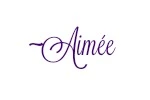
It’s confession time.
I have not always used nor understood the point of piping. I didn’t get it. I didn’t know when to use it, and I was pretty sure it was a waste of my time.
And then, I got a bit better at my sewing. So I stopped using excuses as to why I didn’t pipe and finally acknowledged that it was because I didn’t know how to use it at all.
Piping, in this context, refers to a 1 1/2″-2″ wide strip of fabric, cut on the bias, which has then been folded in half with a piece of cording place in between. A tight stitch along the side of the cording creates a smooth finish. This piping is then used in various places on bodices, and occasionally skirts, to add strength, texture, and contrast. The tricky part is you have to keep your stitches tight. I mean tight. You just want to see the cording peeping through in a neat and tidy fashion. And this is where I would become frustrated and give up…I just couldn’t seem to make my stitches tight enough.
So piping was left on the back burner for several years, until one day when I decided to try it again.
I took a deep breath, stitched as close as as could to the cording and would you believe it!!! – It came out perfectly!! In fact, it looked so great, I couldn’t believe I hadn’t been using this technique all along. So now I’m back on the piping train and loving it! And I thought nothing would do but to create a post celebrating this wonderful little technique.
My return to piping on a 1860’s Garibaldi blouse.

Piping is most commonly found around the armsyce, or armhole, of bodices from the early 20th century and back. Here is an example of an 1840’s gown from the Tasha Tudor collection:

Notice the cord like piece between the sleeve gathers and the shoulder? That’s piping! While most commonly used in the same fabric as the gown itself, one can sometimes use coordinating fabric to add a bit of pop!
Piping can also be used in between bodice seams. Notice the very small piping along the back seams of this 1860’s bodice as well as the 1810’s Pelisse.


Piping can also be used to add details to sleeves…
notice the sleeve of this Regency jacket. The piping adds interest.

The same can be said for this 1860’s sleeve where the bands have piped edges.

And let’s not forget the rather advanced skill of putting piping around the edges of bodices to keep a smooth and clean finish!
This 1840’s gold gown has some wonderful examples:

If you have never tried piping, or haven’t in a long time, I highly recommend bringing back this very fun and relatively easy technique!!






















































